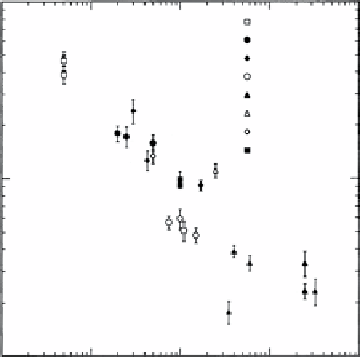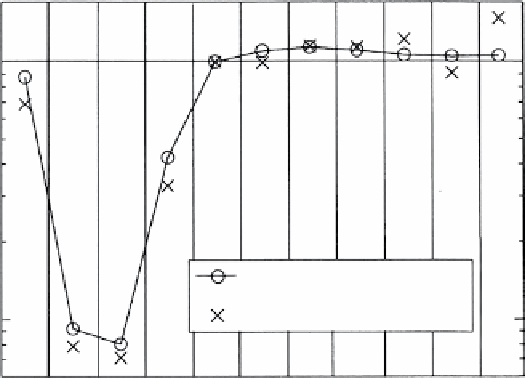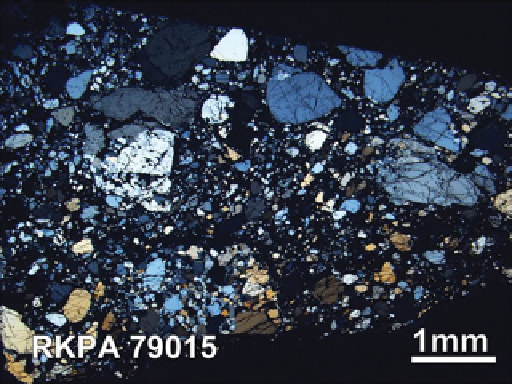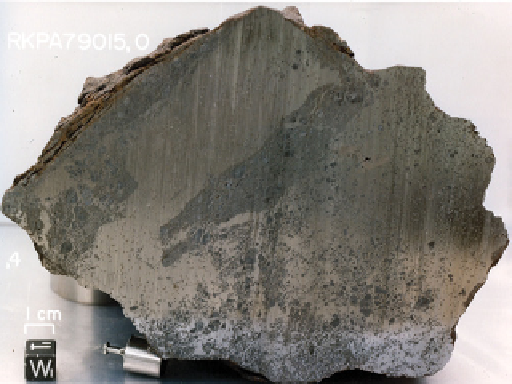Geology Reference
In-Depth Information
Mesosiderite
10,022 g
Found January 11, 1980
26.0 × 18.5 × 13.0 cm
Weathering = A/B
Some mesosiderites have anomalous or unusual features and thus deviate
from the more common type of mesosiderite. This may be due to diverse
processes on a single parent asteroid, or there may be multiple parent
bodies for the mesosiderites, thus giving rise to more compositional and
textural variation.
1000
W
Re
lr
Pt
Ni
Co
Au
As
Cu
Ga
Sb
1.7
Mesosiderites
Pallasites
Chondrites
IllAB irons
IVA irons
lAB iron
IID iron
IIICD irons
B
PA
P
ES
CHI
1.0
RK
SS
GM
IM
NE
0.5
CA
GU
DA
TO
100
TA
KE
SP
GR
CY
CU
CHa
0.2
Gl
DU
BR
RKPA79015/high Au Ni Mes
BC
NW
RKPA79015/Mes mean
1.0
10
0.1
1
10
Cooling rate (K/Ma)
100
1000
Plate 76
MiNERALogy
SigNiFiCANCE
RKP A79015 is an iron with a slightly weathered exterior in
which are set silicate fragments about 5 mm in average size.
The most common fragments of this type are greenish single
crystals showing cleavage that are probably orthopyroxenes,
which appear to be present throughout the meteorite. The
major portion of and exposed interior surface shows
kamacite with lesser taenite. Approximately 10% of the
meteorite consists of ellipsoidal to subangular inclusions
which are dominantly troilite, silicate, or troilite plus silicate.
The silicate has the composition of a magnesian orthopy-
roxene (estimated at Wo
2
En
73
Fs
25
) in the largest inclusion; a
second phase may be intergrown with the pyroxene. other
phases present include chromite and schreibersite.
RKP A79015 exhibits metal composition and high
modal metal content that is distinct from most mesosid-
erites, thus making it a more anomalous member of the
group (right, [810]). However, it does exhibit a very slow
cooling rate based on the exsolution textures in the metal
(left, [814]).
References [808-814]




